Meanwhile, researchers work to establish a clear link between deep-sea corals and commercial fish populations
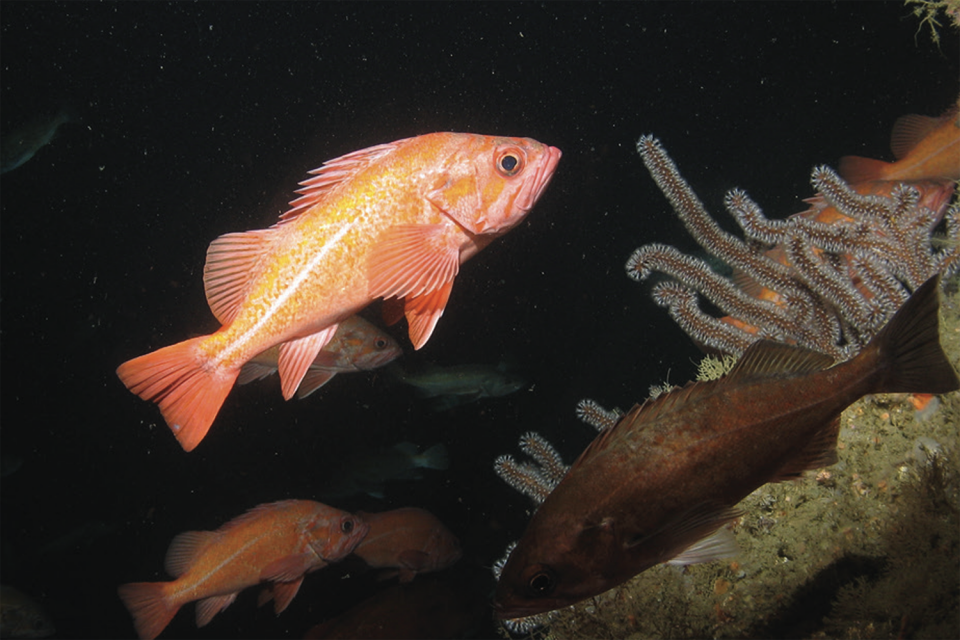
For the last several years, aquaculture managers have used remotely operated vehicles (ROVs) to do everything from monitoring net pens, retrieving morts and measuring water temperature, all with the promise of streamlining processes for greater (eventual) affordability. Management of fisheries in Alaska, the Pacific Northwest and the Gulf of Maine is also starting to be informed by decades’ worth of data collection using these machines.
Tom Hourigan, chief scientist of NOAA’s Deep Sea Coral Research and Technology Program, has been working to develop a broader understanding of deep-sea corals and sponges and their potential importance to the lifecycles of a number of commercially and recreationally relevant fish species. Grouper and snapper in Florida waters, redfish in the Gulf of Maine, rockfish off the West Coast and Alaska, and Atka mackerel and king crab in Alaska have all been shown to convene in the coral habitats that lie in rocky places around coastal states, including in canyons and seamounts.
“It was really by going down and looking with [ROVs] that we were able to see the behavior of these fishes and the way they use coral habitat for shelter, probably also for hunting food, and in many cases, reproduction,” Hourigan says. Some species may also use corals to hide from predators, he says, and the ROV data “really changed our view of these ecosystems.”
Bit by bit, Hourigan and colleagues have been piecing together a map of deep-sea coral areas and figuring out what fish species are associated with them. While almost all the ROVs they employ collect temperature, oxygen, and salinity data and can pick up samples, Hourigan says their most “impactful” data are visual. Researchers have been able to see for themselves that newborn redfish larvae off the Gulf of Maine shelter within the polyps of sea pens and gorgonian corals, for example, according to Hourigan.
Many of these habitats are in bad shape, though, likely affected by extreme temperatures, disease, as well as shipping, mining and oil-extraction operations. But trawling has also had devastating impacts on the health of these regions, in some places reducing them to rubble. This is a major concern for a slow-developing species like black coral from Hawaii, a colony that “started growing 4,000 years ago during the Middle [Kingdom] of ancient Egypt,” Hourigan says. Recovery is likely to take centuries, at least – if it happens at all.
“Habitat loss is a primary concern for fisheries management, and one of the reasons our program was set up,” Hourigan says. “Understanding where these habitats are and the types of fishing gear that are appropriate or inappropriate…has been a major focus of our program.”
As a result, in 2021, Northeast NOAA Fisheries and the New England Fisheries Management Council (NEFMC) acted to protect areas important to deep-sea corals. Most notably, a Connecticut-size area off Georges Bank where, with the exception of lobster and red crab pots, bottom-contact gear is now banned; NEFMC also protected some smaller areas of gorgonian habitat in the Gulf of Maine. The former is a complement to measures taken in 2017 with the establishment of the Frank R. Lautenberg Deep Sea Coral Area.
To preserve corals and sponges in Alaska, with its highly productive fisheries, in 2006 large offshore areas were protected from bottom trawling to “limit expansion of fisheries into previously unimpacted habitats and protect essential fish habitat for fisheries species,” says Hourigan. NOAA Fisheries and fishermen have modified a Bering Sea flatfish trawl that’s raised off the bottom to reduce impacts on seafloor animals while still herding flatfish, which solves at least one of many impacts here on corals and sponges.
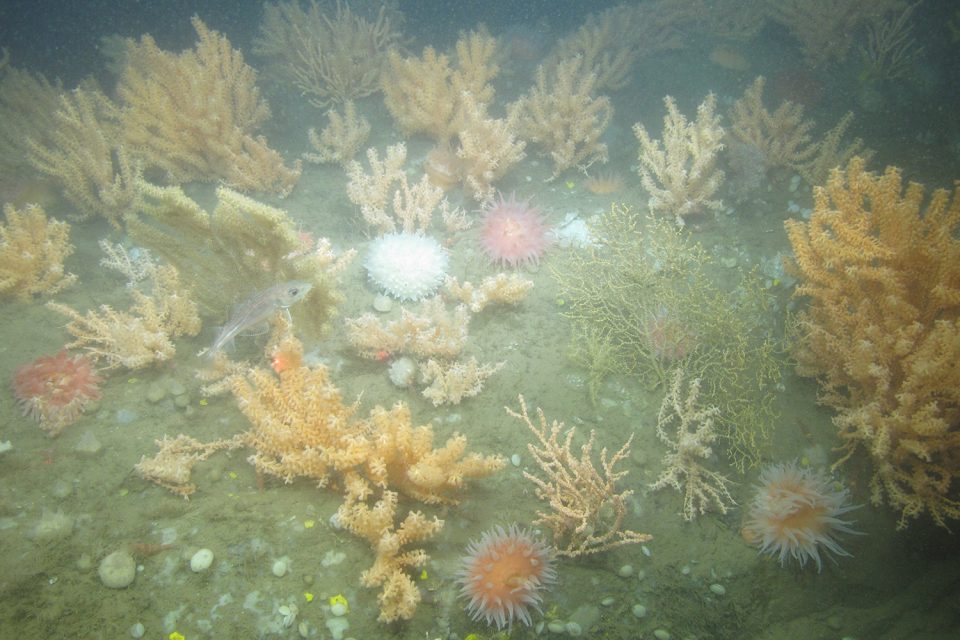
Peter Auster is senior research scientist at the Mystic Aquarium and sits on NEFMC’s habitat plan development team. His years of study have informed coral conservation in the Gulf of Maine and elsewhere. He says the link between preserving corals and sustainable commercial fish populations hasn’t yet been definitively established.
“We’re trying to better understand the functional role that corals play as habitat for fishes that are managed” versus other kinds of habitats, he says. “Certainly, fish use corals but whether there is a population-level effect remains to be seen.”
Autonomous underwater vehicles (AUVs) have also informed coral-related research projects. Hourigan says ROVs are well-suited to moving slowly over the ocean bottom. But AUVs are cheaper and can be pre-programmed to “cover larger areas than an ROV can in a single dive, and they can also create mosaics of the bottom so you can get picture of how different habitats are connected,” he says. How much either type of vehicle, with its propeller noises and lights, affects the behavior of the fish they’re trying to study is a looming question.
“Are we actually seeing all the fish that are there? That type of information will be needed in order to see how we can better use these data for fisheries management,” says Hourigan.
NOAA deep-sea coral and sponge work is ongoing in Alaska until 2024; a second, three-year Northeast initiative will begin in 2023, seeking to better understand the links between fish and their reef dependence. It may well turn out that there are “demographic benefits to managed species like cod by protecting corals, especially as the climate changes,” Auster says, remarking on his surprise to discover juvenile cod at 200 meters deep during previous ROV dives.
“There is this nexus between where we fish, what the large community of organisms that live there is composed of, and are there actions that better sustain both our natural heritage as well as communities of people?” Auster says. “There’s more to learn.”
Follow the Advocate on Twitter @GSA_Advocate
Now that you've reached the end of the article ...
… please consider supporting GSA’s mission to advance responsible seafood practices through education, advocacy and third-party assurances. The Advocate aims to document the evolution of responsible seafood practices and share the expansive knowledge of our vast network of contributors.
By becoming a Global Seafood Alliance member, you’re ensuring that all of the pre-competitive work we do through member benefits, resources and events can continue. Individual membership costs just $50 a year.
Not a GSA member? Join us.
Author
-

Lela Nargi
Lela Nargi is a Brooklyn, N.Y.-based veteran freelance journalist covering the food system, social justice issues, science/environment, and the places where those topics intersect for The Guardian, Civil Eats, City Monitor, JSTOR Daily, Sierra, Hakai, and Ensia, among other outlets; she’s currently contributing writer for The Counter. You can find her at lelanargi.com and on Twitter @LelaNargi.
Tagged With
Related Posts
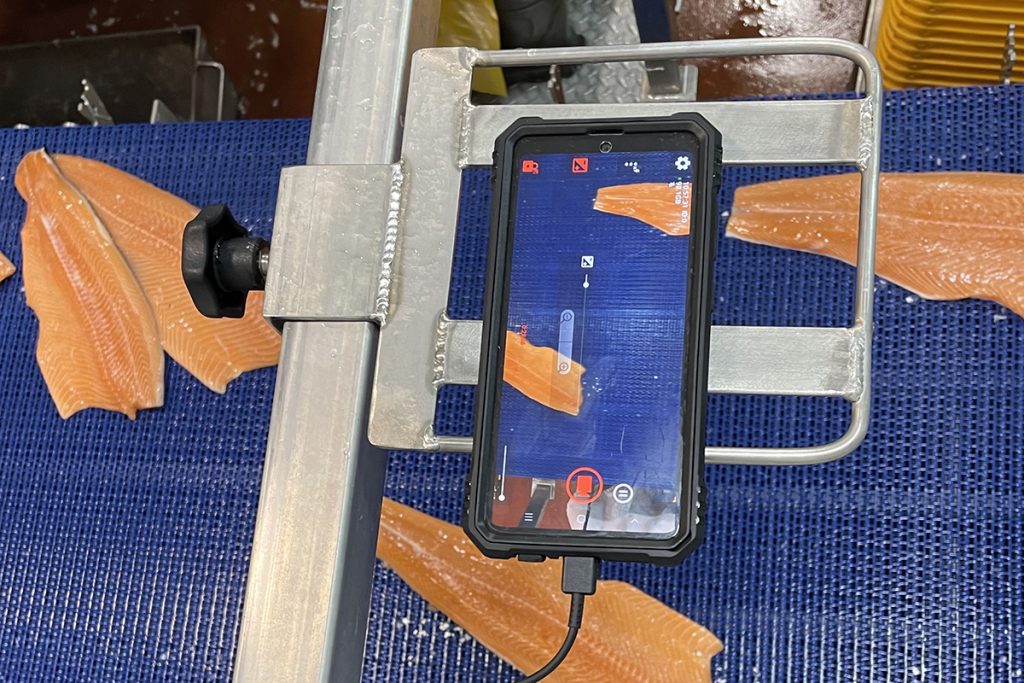
Fisheries
Make seafood production and processing more responsive and responsible? Sounds like a job for AI
Environmental reporting and quality control are two additional areas in which artificial intelligence can boost seafood producers' performance.
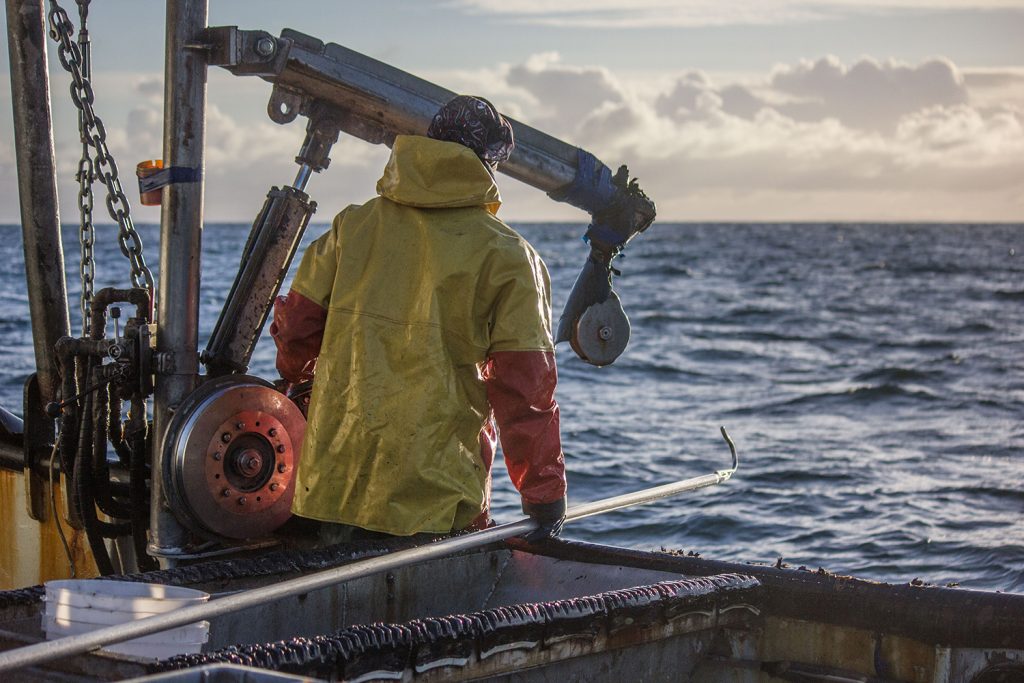
Fisheries
Artificial intelligence is already helping improve fisheries, but the trick is in training the tech
Artificial intelligence is providing valuable data to fisheries, cutting costs and the need for human review. Can the technology be perfected?
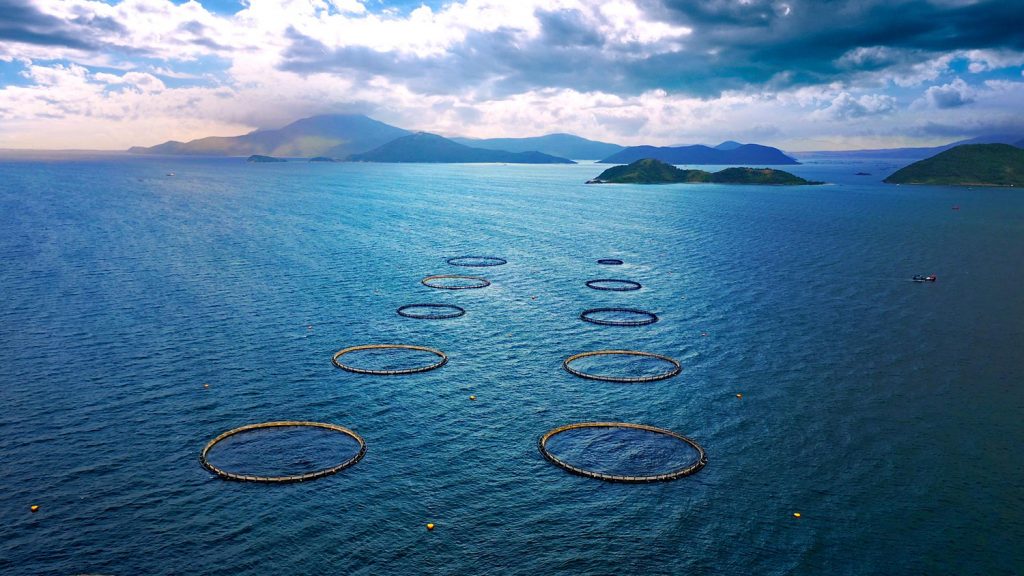
Responsibility
Does aquaculture really need a heat-tolerant salmon to adapt to rising ocean temperatures?
With rising ocean temperatures, are efforts to breed a heat-resistant salmon a race against nature? Or does the ideal fish for tropical aquaculture already exist?
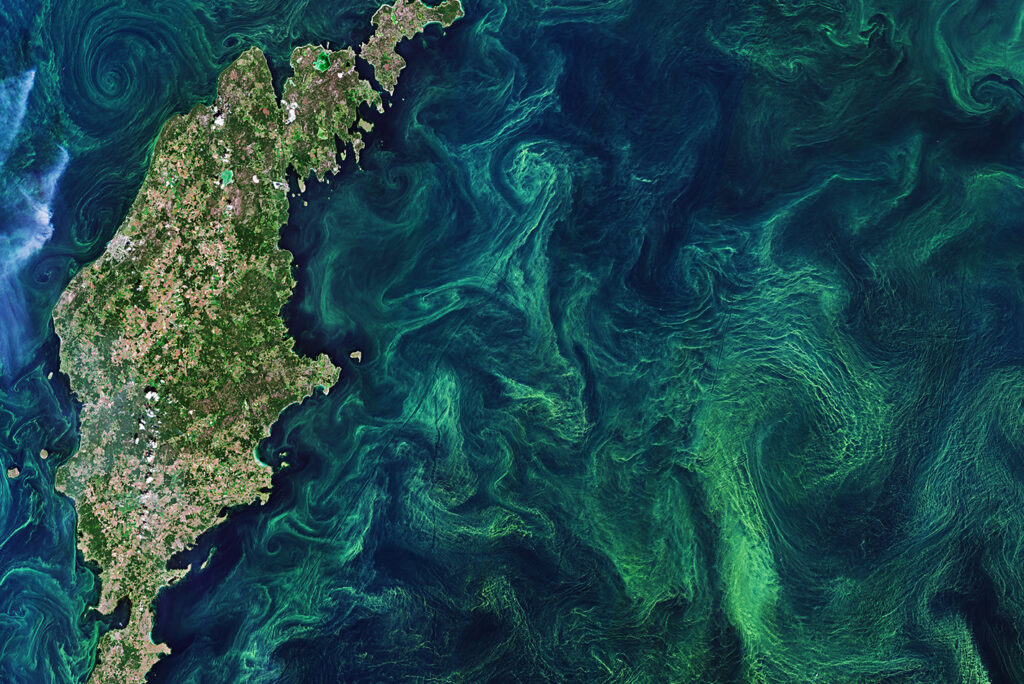
Fisheries
Increasingly frequent and costly, marine heatwaves are testing the resilience of fisheries and aquaculture
Marine heatwaves have already caused severe losses for seafood, but in some cases, the industry may see some benefits from these events.


